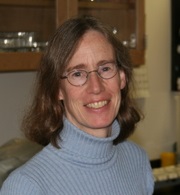Biological Science Faculty Member - Retired
Dr. Alice A. Winn
- Office: 4018 King Life Sciences
- Office: (850) 644-9833
- Area: Ecology & Evolution
- Lab: King Life Sciences
- Lab: (850) 644-3411
- Fax: (850) 645-8447
- Mail code: 4295
- E-mail: winn@bio.fsu.edu

Research and Professional Interests:
Plant population biology, life-history evolution, and ecological genetics.
Selected Publications:
Winn, A. A. 1999. The functional significance and fitness consequences of heterophylly. Intl. J. Plant Sci. 160: s113-121.
Poulton, J., and A. A. Winn. 2002. Costs of canalization and plasticity in response to neighbors in Brassica rapa. Plant Species Biology 17: 109-118.
Winn, A. A. 2004. Natural selection, evolvability and bias due to environmental covariance in the field in an annual plant. Journal of Evolutionary Biology 17: 1073-1083.
Moriuchi, K. S., and A. A. Winn. 2005. Relationships among growth, development and plastic response to environment quality in a perennial plant. New Phytologist 166: 149-158.
Burns, J. H., and A. A. Winn. 2006. Are invasive species more plastic? A comparison of plastic responses to competition by invasive and non-invasive congeners in the Commelinaceae. Biological Invasions 8: 797-807.
Erickson, G. M., P.J. Currie, B. D. Inouye, and A. A. Winn. 2006. Tyrannosaur life tables: an example of nonavian dinosaur population biology. Science 313: 213-216.
Oakley, C. G., K. S. Moriuchi, and A. A. Winn. 2007. The maintenance of outcrossing in predominantly selfing species: ideas and evidence form cleistogamous species. Annual Review of Ecology, Evolution, and Systematics 38: 437-457.
Burns, J. H., S. L. Halpern, and A. A. Winn. 2007. A test for a cost of opportunism in invasive plant species in the Commelinaceae. Biological Invasions 9: 213-225.
Oakley, C. G., and A. A. Winn. 2008. Population and family level inbreeding depression in a cleistogamous perennial. International Journal of Plant Sciences 169: 523-530.
Hereford, J., and A. A. Winn. 2008. Limits to local adaptation in six populations of the annual plant Diodia teres. New Phytologist 178: 888-896.

